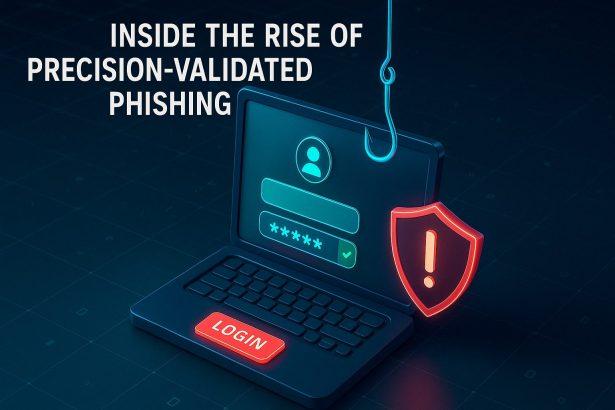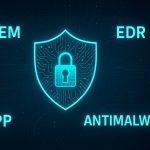In today’s rapidly evolving threat landscape, the cybersecurity community is witnessing the rise of a dangerous and hard-to-detect attack strategy: precision-validated phishing. Unlike traditional phishing methods that rely on casting a wide net, this technique uses targeted verification and evasion to ensure higher success rates while sidestepping detection systems.
📌 Key Takeaway: Precision-validated phishing verifies a user’s identity in real-time, enabling hyper-targeted attacks that security tools often fail to detect.
Table of Contents
- What Is Precision-Validated Phishing?
- How the Attack Works
- Why It’s So Hard to Detect
- Real-World Impact & Case Studies
- Mitigation Tactics & Strategic Response
- How to Strengthen Your Organization
- Conclusion & Future Outlook
- SEO Keywords & Tags
What Is Precision-Validated Phishing?
Precision-validated phishing is a sophisticated evolution of classic phishing. In this approach, the attacker verifies the email address or identity of the target before launching the phishing payload (e.g., a fake login page). If the identity doesn’t match their intended target, the system redirects to a legitimate website or simply returns an error message—preventing unnecessary detection.
How the Attack Works
Attackers implement JavaScript-based validation scripts or connect to third-party email verification APIs within phishing kits. Here’s how it functions:
🔍 Attack Lifecycle Table
| Phase | Activity | Purpose |
|---|---|---|
| Target Verification | Email is checked against a precompiled list | Ensures only high-value targets proceed |
| Conditional Logic | Non-matching users are redirected or denied access | Avoids alerting security systems |
| Payload Delivery | Matching users are shown realistic phishing pages | Maximizes likelihood of credential theft |
| Exfiltration | Stolen credentials are sent to attacker’s server | Enables account takeovers or lateral attacks |
⚠️ Stealth Mechanism: If a phishing analyst or security researcher stumbles on the page without matching credentials, they see a benign screen—leading them to believe it’s safe.
Why It’s So Hard to Detect
🚨 Security Tool Evasion Techniques
- Real-Time Validation: Sandboxed environments and automated tools often fail because they don’t enter a “real” email.
- Ethical Limitations: Human analysts can’t test with real emails due to privacy and legal restrictions.
- Low Signal Noise: Since irrelevant targets are filtered out, the number of phishing reports remains minimal, prolonging the attack’s active window.
🔐 Effect on SOC Teams
| Challenge | Impact on Security Analysts |
|---|---|
| Incomplete visibility | Analysts cannot reproduce the attack in test environments |
| Reduced alerts | Only valid targets trigger the phishing mechanism |
| Legal limitations | Testing real user accounts is restricted |
| Delayed response | Campaigns may go undetected for longer periods |
Real-World Impact & Case Studies
Cofense and BleepingComputer have reported multiple active campaigns where high-profile organizations were targeted using this method. These included:
- Spear phishing attempts targeting C-suite executives
- Campaigns using Microsoft 365 login clones
- Redirection to legitimate domains when validation failed
Such campaigns have breached several layers of security—highlighting the importance of evolving beyond signature-based defenses.
Mitigation Tactics & Strategic Response
✅ Dynamic Detection Strategies
- Behavioral Analysis Tools
Monitor user behavior (e.g., unusual login times, IP shifts). - Heuristic-Based Email Scanning
Go beyond signature matching—identify phishing via structural anomalies. - Threat Intelligence Platforms (TIPs)
Integrate feeds that detect low-signal phishing indicators in real time.
✅ Proactive Defense Table
| Defense Measure | Description |
|---|---|
| Email Verification Traps | Use honey-pot addresses to bait and detect phishing tools |
| Threat Simulation | Conduct phishing simulation drills with precision-validated techniques |
| Zero Trust Architecture | Apply least-privilege principles to minimize breach impact |
| User Training | Train staff to recognize realistic phishing pages and report anomalies |
How to Strengthen Your Organization
- Deploy Email Gateways with Heuristic Capabilities
Use next-gen filters that identify contextual threats, not just known patterns. - Audit External Scripts in Emails and Web Pages
Block suspicious JavaScript calls or external API usage within incoming emails. - Encourage a ‘See Something, Say Something’ Culture
Frontline workers who know how to spot social engineering attempts are your first line of defense.
Conclusion & Future Outlook
The emergence of precision-validated phishing marks a pivotal shift in cybercrime strategy. These campaigns are smarter, stealthier, and increasingly effective against conventional defense mechanisms.
Organizations must adopt dynamic, AI-enhanced, and behavior-driven security frameworks. As threat actors continue refining their tactics, cybersecurity defenders must evolve equally fast to stay ahead of the curve.
🚨 Final Thought: If your detection systems only catch what’s already known, you’re not defending—you’re reacting.
Protect Your Business’ Cybersecurity Now!
Protect your business from evolving cyber threats with our tailored cybersecurity solutions designed for companies of all sizes. From malware and phishing to ransomware protection, our multi-license packages ensure comprehensive security across all devices, keeping your sensitive data safe and your operations running smoothly. With advanced features like real-time threat monitoring, endpoint security, and secure data encryption, you can focus on growth while we handle your digital protection. **Request a free quote today** for affordable, scalable solutions and ensure your business stays secure and compliant. Don’t wait—get protected before threats strike!




